You’re looking to dive into the world of hot tubs, aren’t you? But how deep is a hot tub? It’s not just about the water’s warmth, but also the depth that determines your comfort and safety.
The depth of a hot tub typically ranges from 29 to 36 inches. However, the exact depth can vary depending on the specific model and make of the hot tub. The depth is measured from the inside of the tub, not including the outer shell or any coverings. It’s essential to consider this measurement when buying a hot tub because it affects the amount of water needed and the comfort of the users.
This guide will give you a deep understanding of hot tub depths and help you choose the right one. Let’s dive in to ensure your relaxation doesn’t turn into a safety concern.
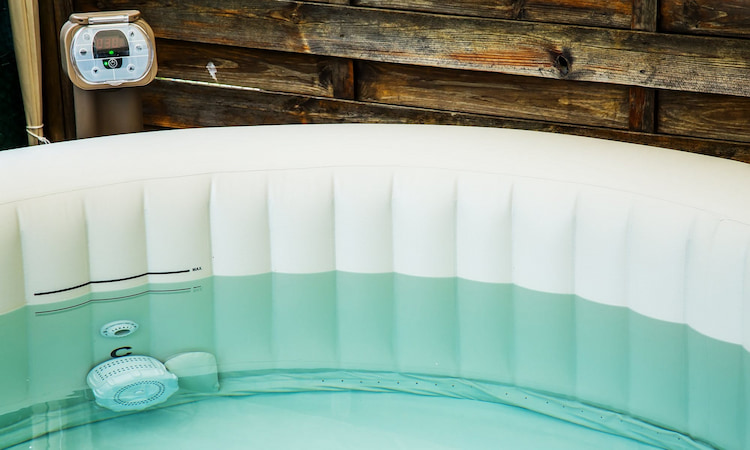
Quick Navigation
Understanding Hot Tub Depth: The Basics
You’ll need to grasp the concept of depth to fully understand how deep a hot tub can be. In technical terms, depth refers to the distance from the top of the tub to the bottom in a straight line. It’s crucial not just for your comfort, but also for safety concerns and maintenance.
The standard hot tub depth is usually between 30 and 40 inches. But why is this? It’s mainly due to the fact that this depth allows most adults to comfortably immerse their bodies up to shoulder level when seated. This immersion offers optimal relaxation and therapeutic benefits.
You’ll notice that hot tubs vary in depth. It’s because manufacturers offer options to suit different needs. If you’re taller or prefer more immersion, you might opt for a deeper model. On the contrary, if you have mobility issues or have children using the hot tub, a less deep model might be more suitable.
Factors Determining the Depth of a Hot Tub
There are several factors you’ll consider when determining the depth of a hot tub, and comfort and safety are just two of them. You need to think about the hot tub’s purpose, the users, the location, and your budget.
- Purpose: Are you looking for therapeutic benefits, relaxation, or socializing? Deeper tubs allow for more full-body immersion, which can provide greater therapeutic effects.
- Users: Consider the height of the people who’ll be using the hot tub. For children or shorter adults, a shallower tub might be more appropriate.
- Location: If you’re placing the tub indoors, you might have height restrictions. Outdoor locations might permit deeper tubs.
- Budget: Deeper hot tubs can be more expensive, not just to purchase but also to maintain. They’ll require more water, heat, and chemicals.
Your choices will impact the hot tub’s functionality and the enjoyment of its users. While there’s no one-size-fits-all solution, understanding these factors will help you make an informed decision. So, remember, it’s not just about ‘how deep is a hot tub’, but ‘how deep should your hot tub be’.
The Impact of Hot Tub Depth on User Comfort
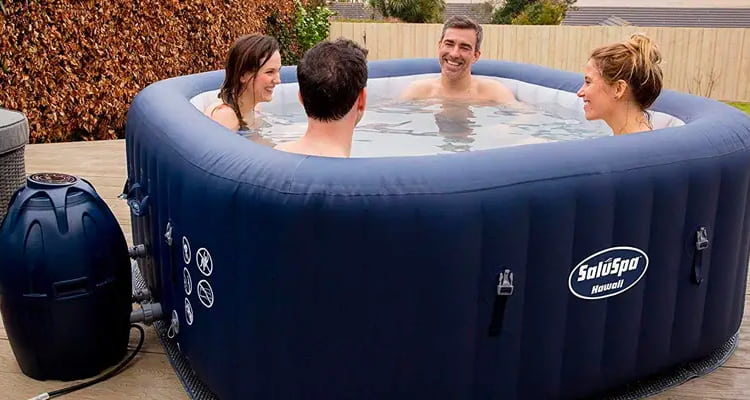
Often, you’ll find that the depth of a hot tub plays a significant role in user comfort, but it’s not the only factor to consider. Depth affects how you sit or recline, and how buoyant you feel, both of which impact your comfort level. Most hot tubs range from 29 to 39 inches in depth.
If you’re short, a deep tub might mean you’re constantly treading water or can’t touch the bottom. This could lead to discomfort, especially during long soaks. On the other hand, if you’re tall, a shallow tub might not cover your body fully, leaving you feeling cold and exposed.
But depth isn’t solely about height. It also affects the overall soaking experience. A deeper tub can provide a more immersive, floaty feeling, which some find extremely relaxing. Shallow tubs, in contrast, may offer a more grounded, seated experience.
You’ll also need to consider the type of seating in the tub. Built-in seats of varying heights can help mitigate depth issues.
Safety Considerations Related to Hot Tub Depth
While you’re considering the depth of your hot tub for comfort, it’s equally crucial to ponder safety implications related to its depth. A too-deep tub might pose risks, particularly for children or shorter individuals.
- Drowning Risk: Deeper tubs increase the risk of accidental drowning, particularly for children or those who can’t swim. Make sure to always supervise kids around the tub.
- Entrapment Risk: If the tub is too deep, there’s a chance someone could become stuck under the water, leading to possible injury or drowning. Always check the tub’s dimensions before buying.
- Heat Exposure: Deeper water means more heat exposure, which can lead to overheating or fainting. Watch the temperature and don’t stay in too long.
- Slipping Risk: Climbing in and out of a deep tub can be hazardous. Install handrails or non-slip mats to help prevent accidents.
You must maintain a balance between depth for comfort and safety. It’s not just about how deep a hot tub is, but also about how you use it. Be vigilant, take precautions, and enjoy your hot tub experience safely.
Related Read: Why Not Use Hot Tub After Knee Injury?
Choosing the Right Depth for Your Hot Tub
You’ll frequently need to weigh personal comfort against safety when choosing the right depth for your hot tub. It’s not a one-size-fits-all scenario, and the depth can greatly affect your soaking experience.
The standard depth of a hot tub is between 30 and 40 inches. However, you may want a deeper or shallower tub depending on your needs. For example, if you’re tall or prefer full-body submersion, a deeper tub might be more suitable. But, if you have mobility issues, a shallower tub could be safer and more comfortable.
Consider the users. If children will be using the tub, it’s important to ensure the water level is not too high. A depth of around 30 inches is considered safe for most children. Similarly, if the tub will be used by seniors, a shallower design with easy access might be preferable.
Also, think about energy efficiency. Deeper hot tubs require more energy to heat and maintain the temperature.
Related Read: What Age Can You Go in Hot Tub?
Frequently Asked Questions
The depth of your tub significantly impacts water consumption and energy costs. Deeper tubs require more water to fill and more energy to heat, which can increase your home’s overall energy usage and expenses.
Yes, there are health benefits. Deeper hot tubs submerge your body more, providing increased hydrostatic pressure which improves circulation, helps with pain relief, and boosts cardiovascular health. Always consult a doctor before starting hydrotherapy.
Once installed, you can’t typically adjust a hot tub’s depth. It’s constructed with a fixed depth. For a change, you’d need to buy a new tub or undergo a significant, costly renovation.
Deeper hot tubs typically utilize materials like acrylic, fiberglass, and polyethylene. They’re chosen for their durability and ability to withstand pressure. You’ll also find metal frames and high-density foam insulation in their construction.
The depth impacts your cleaning process. Deeper tubs require more chemicals for water sanitation. You’ll also need a longer brush or vacuum for scrubbing the bottom. It’s more work, but it’s necessary for a clean, safe soak.
Conclusion
In wrapping up, your hot tub’s depth is a crucial factor to consider. It’s influenced by various elements like design, seating style, and user preference. Deep tubs promise more immersion but require more caution.
Choosing the right depth enhances comfort and safety. So, when selecting your hot tub, understand the basics, consider the impact on your comfort, ponder safety considerations, and ultimately, pick a depth that suits your needs.


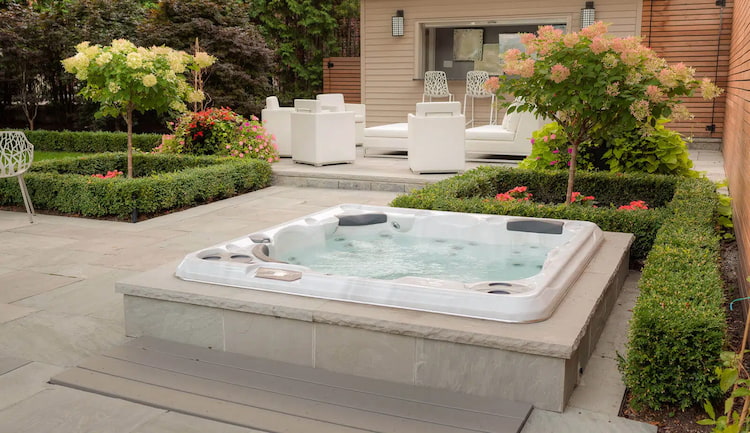
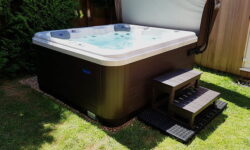
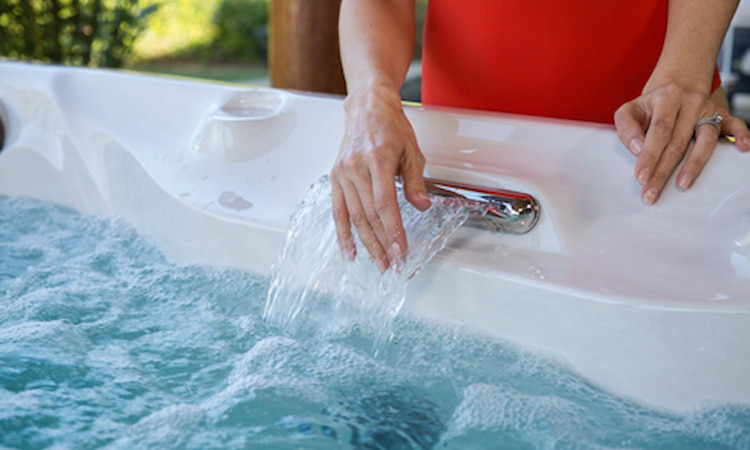
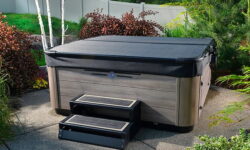
![Can You Put a Hot Tub on Pavers? [Pros & Cons] can you put your hot tub on pavers](https://hottubtales.com/wp-content/uploads/2023/10/can-you-put-your-hot-tub-on-pavers-250x150.jpg)